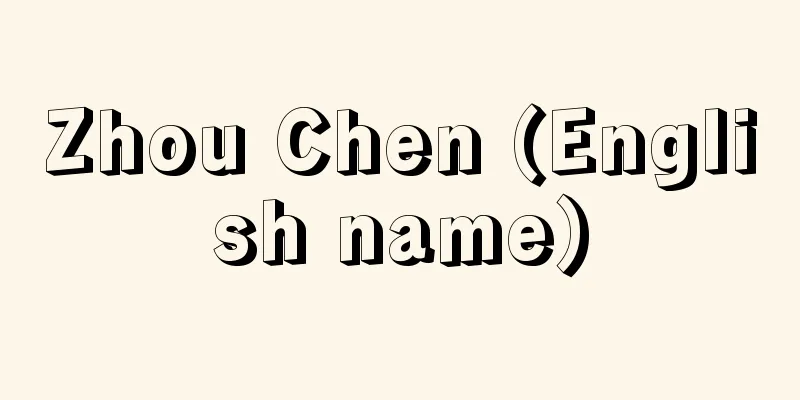Duchy of Burgundy (English: État bourguignon) French

|
A territory of the Duke of Burgundy in medieval France. [Koichi Horikoshi] Origin of the principalityIn the early 11th century, in the Kingdom of Burgundy, which was in the Frankish Empire, a noble family was established by the French Capetian royal family in the land west of the Saône River. They are called the Capetian Dukes of Burgundy (Burgundy is the French pronunciation of Burgundy), and they continued to exist until the mid-14th century. In 1361, the male line of the noble family died out, and the duchy was absorbed into the French royal family, the Valois family, and then in 1363 it was given to Philip (I), the youngest son of Jean, head of the Valois family. This was the Valois Dukes of Burgundy, which continued for four generations until 1477, forming the Duchy of Burgundy. The Duchy of Burgundy is a translation of the French term État Bourguignon, which is not, strictly speaking, a proper noun in European history; it is a term that derives from the House of Burgundy's expansion into Flanders and the Low Countries in addition to its original territory, the Duchy of Burgundy, and its development in the direction of creating a national organization to rival the French monarchy. [Koichi Horikoshi] Principality territoryPhilip I (1363-1404), the first head of the Valois Dukes of Burgundy, received the County of Burgundy east of the Saône River from the Holy Roman Emperor in 1384, and the County of Flanders and the County of Artois from the King of France. Both were inherited by his wife, Marguerite of Flanders. The Dukes thus gained possession of the "northern territories." Eventually, under the third head of the Dukes, Philip II (1419-67), the Dukes acquired the Duchy of Brabant in the Netherlands, and the three counties of Holland, Zeeland, and Hainaut. The Dukes of Luxembourg and Limburg also came under the control of the Dukes during his reign. Furthermore, the last head of the family, Charles (reigned 1467-77), during his short ten-year reign, aimed to acquire Alsace (Elsace) and Lorraine (Lorraine), which were adjacent to Burgundy, and held them for a time. The Duchy of Gerland, located east of Holland and in the lower Rhine, also became the domain of the dukes during his reign. All of these newly acquired territories were under the suzerainty of the Holy Roman Emperor. From a historical perspective, this roughly corresponds to the territory of the former "Lotharingia," that is, the Middle Kingdom that was established temporarily after the dissolution of the Frankish Kingdom, excluding Italy. [Koichi Horikoshi] The Treaty of ArrasThe actions of these noble families inevitably caused friction with the French royal family. From the Treaty of Troyes in 1420 until the Conference of Arras in 1435, the international political situation in Europe revolved around the conflict between the two families. For the noble families, this was a golden opportunity to sever ties with the French royal family and establish themselves as an independent principality. However, Philip II, the head of the family, never made the decision, and was manipulated by the skillful diplomatic tactics of Charles of Valois (later Charles VII) to make peace with the Valois family (Treaty of Arras, 1435). [Koichi Horikoshi] European Grand DukesPhilip II is often criticized as the "Grand Duke of Europe." In terms of finances and military affairs, the House of Valois was the second most powerful power in Europe. The court culture, which was based in Dijon in Burgundy, Bruges in Flanders, and the palace in Paris, was a culmination of medieval chivalric culture in its solemn formalism, and was well accepted in the civic life of Flanders and the Low Countries, leaving a legacy in modern civic culture, as vividly described by the Dutch historian Huizinga in his book "The Autumn of the Middle Ages." Burgundy culture was a culture with a unique style in various aspects of culture, such as the Netherlandish School of Painting founded by the Van Eyck brothers, and the "New Faith" movement of Netherlandish mysticism that developed from Holland to Flanders. However, although later generations accepted Burgundian culture as a legacy, they did not say much about the Burgundian "state." The understanding that the Dutch Republic (Netherlands), which was established in the second half of the 16th century, was the successor to the Burgundian "state," can only be established by gaining perspective on the multiple twists and turns of history. It is necessary to first gain perspective on the decisions made by Charles, who became head of the family in 1467 after the death of Philip II. [Koichi Horikoshi] Conflict with the monarchyAt the Congress of Arras, the royal family prevented the Burgundian dukes from leaving the kingdom, which meant, in concrete terms, that they remained under the restrictions of the royal judicial power. After that, royal officials fomented conflicts in various places where the dukes ruled, and induced appeals to the royal court. This was a strategy to wear down the dukes by using their superior judicial power as feudal suzerains. At the Congress of Arras, the royal family handed over to the dukes the lordship of the cities along the Somme River south of Artois. In this type of maneuver against the Somme cities, the so-called "judicial war" that the royal family launched against the dukes was the most effective. The dukes, irritated by the royal provocations, united with other lords who had the same dissatisfaction and started a civil war in 1464 (War of the Union of the Commonwealth). Louis XI, head of the House of Valois, appeased the dissatisfaction of the rebellious lords by defeating them one by one, and isolated the dukes. Charles, who succeeded Philip II in 1467, realized that cooperation with the royal family was impossible, and in 1472, after the failure of the civil war in which the princes once again confronted Louis XI, he withdrew from the domestic affairs of France and took the first decisive step towards the realization of the "Kingdom of Lotharingia". This naturally drew the attention of the Holy Roman Emperor and the German princes. Charles plundered the assets of the cities of the Netherlands and Flanders to build a large army, and fought in Friesland, Germain, the Rhineland, Lorraine, Alsace, and Upper Swabia (Switzerland), but was finally defeated and killed in January 1477 in a battle at Nancy against the Swiss mercenaries of the Duke of Lorraine. [Koichi Horikoshi] Marriage into the House of HabsburgCharles' only daughter, Maria, with the support of the Council of Tribes of the northern territories of Flanders, Brabant, and other territories, embarked on a plan to marry Maximilian of Austria (later Emperor I) of the Habsburg family. Although the Duchy of Burgundy and the County of Artois were usurped by the French royal family, the Netherlands, the territories of Flanders, and the County of Burgundy came under the control of the Habsburgs. The Habsburg-Burgundian Dutch territories later came under the control of the Spanish Habsburgs, leading to the Dutch War of Independence in the second half of the 16th century. The decision made by Charles and Maria gave a direction to the future of the northern territories of the Duchy of Burgundy. [Koichi Horikoshi] [References] | |Source: Shogakukan Encyclopedia Nipponica About Encyclopedia Nipponica Information | Legend |
|
中世フランスのブルゴーニュBourgogne公家の領国。 [堀越孝一] 公国の由来フランク王国時代のブルグントBurgund王国のうち、ソーヌ川以西の土地に11世紀初頭、フランスのカペー王家によって公家がたてられた。カペー家系ブルゴーニュ公家(ブルゴーニュはブルグントのフランス語読み)といい、これは14世紀中ごろまで存続した。1361年に公家の男系が絶え、公領はいったんフランス王家のバロア家に吸収されたのち、1363年バロア家当主ジャンの末男フィリップ(1世)に与えられた。これがバロア家系ブルゴーニュ公家で、1477年まで4代を数え、ブルゴーニュ公国を形成する。ブルゴーニュ公国は、フランス語でエタ・ブルギニョンという場合の、その呼称の訳語であって、これは厳密にいえばヨーロッパ史における固有名詞ではなく、ブルゴーニュ家が本来の家領、すなわち、ブルゴーニュ公領のほかに、フランドル、ネーデルラント方面に支配地を広げ、フランス王家に対抗して一つの国家的な組織をつくろうとする方向に展開したことに由来する呼称である。 [堀越孝一] 公国の版図バロア家系のブルゴーニュ公家初代当主フィリップ1世Philippe Ⅰ(在位1363~1404)は、1384年ソーヌ川以東のブルグント伯領を神聖ローマ皇帝より受封し、フランドルとアルトア両伯領をフランス王から受封した。いずれもその妻であるフランドル伯女マルグリットの相続財産である。ここに公家は「北方領国」をもつことになった。やがて、第3代当主フィリップ2世Philippe Ⅱ(在位1419~67)のとき、公家はネーデルラントのブラバント公領、ホラント、ゼーラント、エノー3伯領を取得する。ルクセンブルク、リンブルク両公領も彼の代に公家の統制下に入った。さらに最後の当主シャルルCharles(在位1467~77)は、10年間の短い当主期間において、両ブルゴーニュに隣接するアルザス(エルザス)、ロレーヌ(ロートリンゲン)の領有をねらい、一時はこれを保有し、ホラントの東、ライン川下流域のヘルレ公領もまた彼の代に公家の支配地となった。これら新たに取得された支配地は、いずれも神聖ローマ皇帝の宗主権の及ぶ土地であった。歴史的にみれば、これは往時の「ロタリンギア」、すなわちフランク王国が分解したのちに一時成立した中部王国からイタリアを除いた版図にほぼあたる。 [堀越孝一] アラスの和約この公家の動向は、必然的にフランス王家との摩擦を引き起こす。1420年のトロア条約成立後、1435年のアラスの会議に至るまで、ヨーロッパの国際政局は両家の対立を軸に展開した。公家としては、フランス王家との関係を絶ち、独立の公国としてたつ絶好の機会であった。しかし、当主フィリップ2世はついにその決断を下さず、バロア家のシャルル(後のシャルル7世)の巧みな外交術数に踊らされてバロア家と和解する(1435、アラスの和約)。 [堀越孝一] ヨーロッパの大公フィリップ2世は「ヨーロッパの大公」であったとよく批評される。公家は、その財政や軍事の局面において、ヨーロッパ諸勢力中バロア家に次ぐ大勢力であった。ブルゴーニュのディジョン、フランドルのブリュージュ、そしてパリの公館を拠点に営まれた宮廷文化が、その荘重な形式主義において中世の騎士道文化の集大成であり、フランドルやネーデルラントの市民生活に豊かに受容され、近代市民文化に遺産を残した事情については、オランダの歴史家ホイジンガがその著『中世の秋』に活写したごとくである。ファン・アイク兄弟を始祖とするネーデルラント画派、ホラントからフランドルにかけて展開したネーデルラント神秘主義の「新しい信仰」運動等々、文化の諸局面にわたってブルゴーニュ文化は、一つの独特のスタイルをもった文化であった。 しかし、後代は、ブルゴーニュ文化を遺産として受け取りはしても、ブルゴーニュ「国家」については多くを語らない。16世紀後半に成立するネーデルラント連邦共和国(オランダ)がブルゴーニュ「国家」の後身であるという理解は、歴史の幾重もの屈折についての展望を得て初めて定まる。フィリップ2世の死後、1467年に当主となったシャルルの決断について、まず展望をもつことが必要である。 [堀越孝一] 王権との抗争アラスの会議において王家がブルゴーニュ公家の王国からの離脱を阻止したということは、具体的にいえば一つには公家を王家の司法権の制約下にとどめたということである。以後、王家の役人は公家支配地の各所で紛争を醸成し、王家裁判所への上訴を誘導した。封建宗主としての上級裁判権を武器に公家の消耗を図る作戦である。アラス会議において、王家は公家にアルトアの南のソンム川流域諸都市の都市領主権を譲渡した。このソンム諸都市に対するこの種の工作において、王家が公家に対して仕掛けた、いわば「司法戦争」は、最大の効果を発揮した。公家は、王家の挑発にいらだち、1464年同種の不満をもつ他の諸侯と連帯して内乱を起こした(公益同盟戦争)。バロア王家当主ルイ11世は、各個撃破の形で反逆諸侯の不満をなだめ、公家を孤立せしめた。67年フィリップ2世を継いだシャルルは、王家との協調の不可能を悟り、1472年、再度諸侯がルイ11世と対決した内戦の挫折(ざせつ)を機に、フランスの内政から離脱し、「ロタリンギア王国」の実現へと決定的な第一歩を踏み出したのであった。これは当然神聖ローマ皇帝とドイツ諸侯の警戒を誘う。シャルルは、ネーデルラント、フランドル諸都市の資力を収奪して一大軍団を養い、フリースラント、ヘルレ、ラインラント、ロレーヌ、アルザス、上シュワーベン(スイス)に転戦するが、ついに1477年1月、ロレーヌ公のスイス人傭兵(ようへい)隊とナンシーに戦って敗死する。 [堀越孝一] ハプスブルク家との婚姻シャルルのひとり娘マリアは、フランドル、ブラバントなど北方諸領邦の等族会議の支持を得て、オーストリア・ハプスブルク家のマクシミリアン(後の皇帝、1世)との結婚策に踏み切り、ブルゴーニュ公領とアルトア伯領はフランス王家に横領されたものの、ネーデルラント、フランドル諸領邦とブルグント伯領をハプスブルク家の支配にもたらした。このハプスブルク・ブルゴーニュ公家のネーデルラント領は、その後スペイン・ハプスブルク家の支配地となり、16世紀後半、ネーデルラント独立戦争を迎えるのである。シャルル、マリア父娘の決断が、ブルゴーニュ公家北方領国の未来に一つの方向性を与えた。 [堀越孝一] [参照項目] | |出典 小学館 日本大百科全書(ニッポニカ)日本大百科全書(ニッポニカ)について 情報 | 凡例 |
<<: Bourgogne Theatre (English: Théâtre de l'Hôtel de Bourgogne)
>>: Burgundian School - English spelling: Burgundian school
Recommend
Rondon,CMda S. (English spelling)
…A legendary queen of the ancient Orient. Daughte...
Inoue Yachiyo (4th generation)
Born: May 14, 1905 in Kyoto [Died] March 19, 2004....
Japanese Alps
A general term for the Hida Mountains (Northern A...
Uoshima [Village] - Uoshima
A village in Ochi County, northeastern Ehime Prefe...
Play
…The meaning of the word Ason is a compound word ...
Paper cutting - Kamikiri
A type of entertainment at a vaudeville theater. ...
Disowned - Feeling
〘noun〙① To consider or assign punishment; to inves...
Korea Strait
A strait between the Korean Peninsula and Tsushim...
Apollonios of Perga (English spelling)
He was born in the second half of the 3rd century ...
Great Temple of Aten
...The collection mainly consists of discoveries ...
Rokudo-e
Also called "Rikudo-e." These paintings ...
Echinorhynchus gadi (English spelling) Echinorhynchusgadi
…There are a few cases of Echinorhynchus gadi as ...
Dumas [father] - Dumas
French author. His father, a general, died when he...
Gan-tetsu
...By the 4th generation Tsuruya Nanboku. Commonl...
Backcrossing - Backcrossing
Also known as backcrossing. Crossing the first gen...









